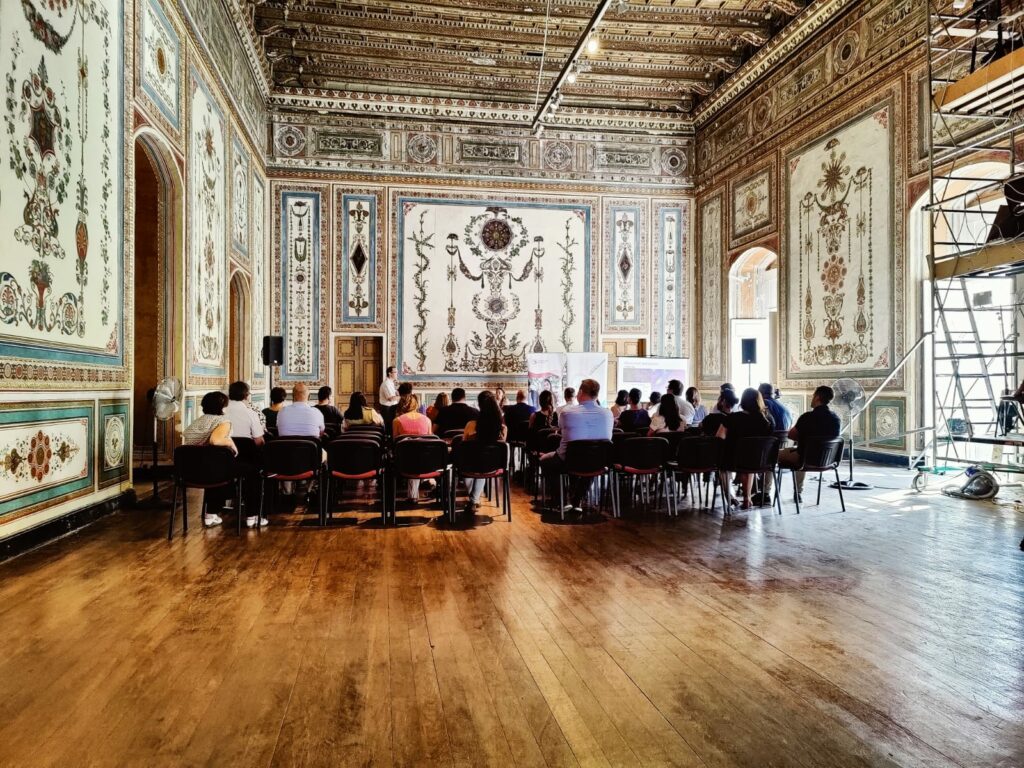

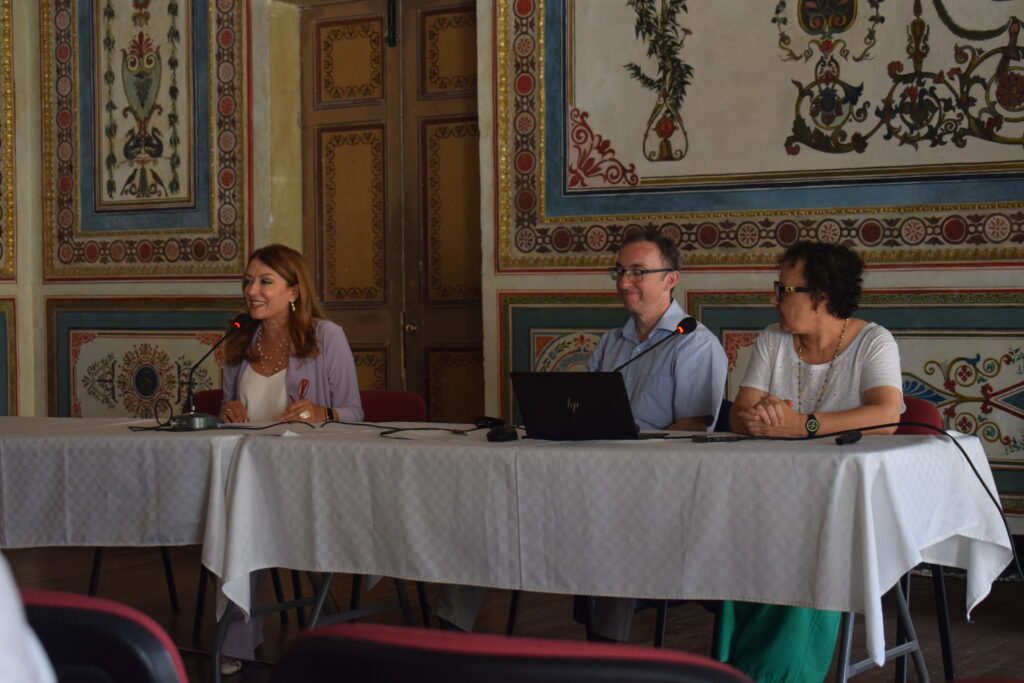
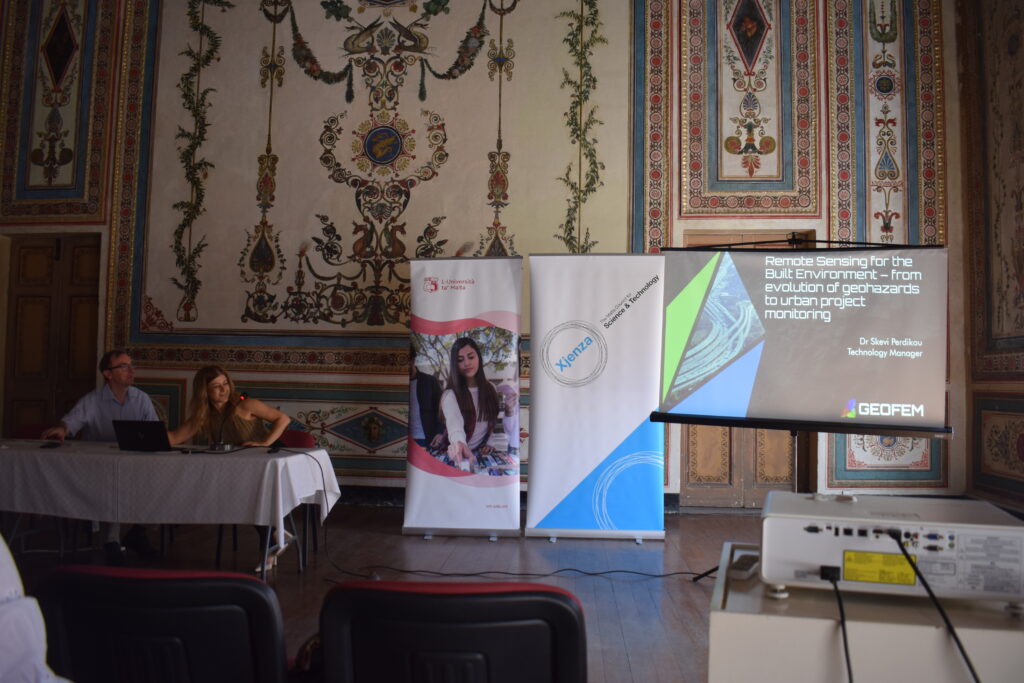
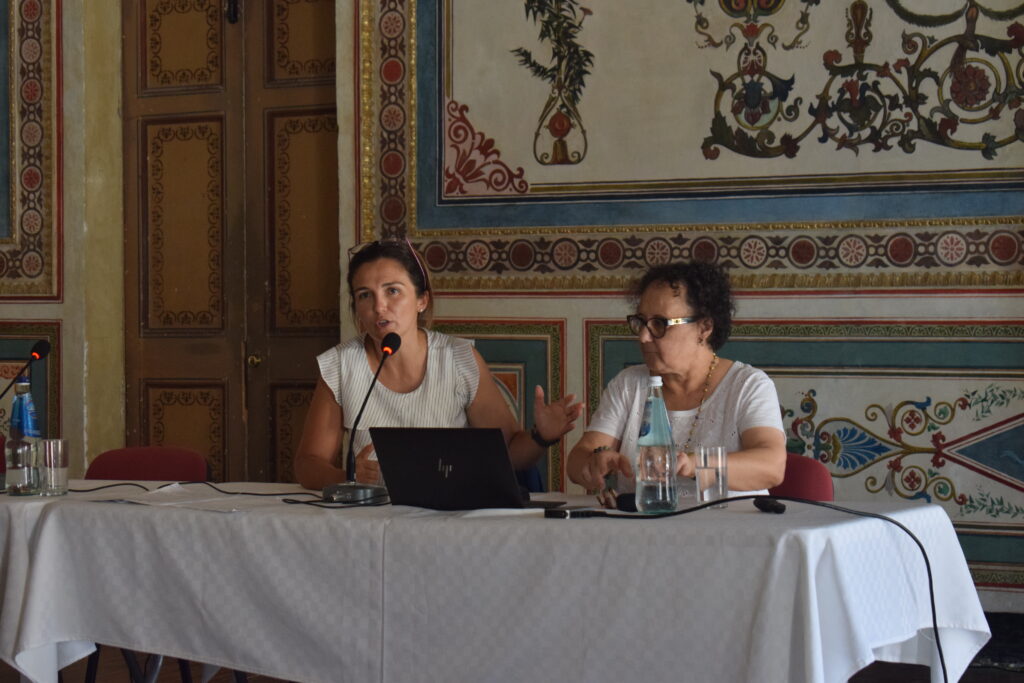
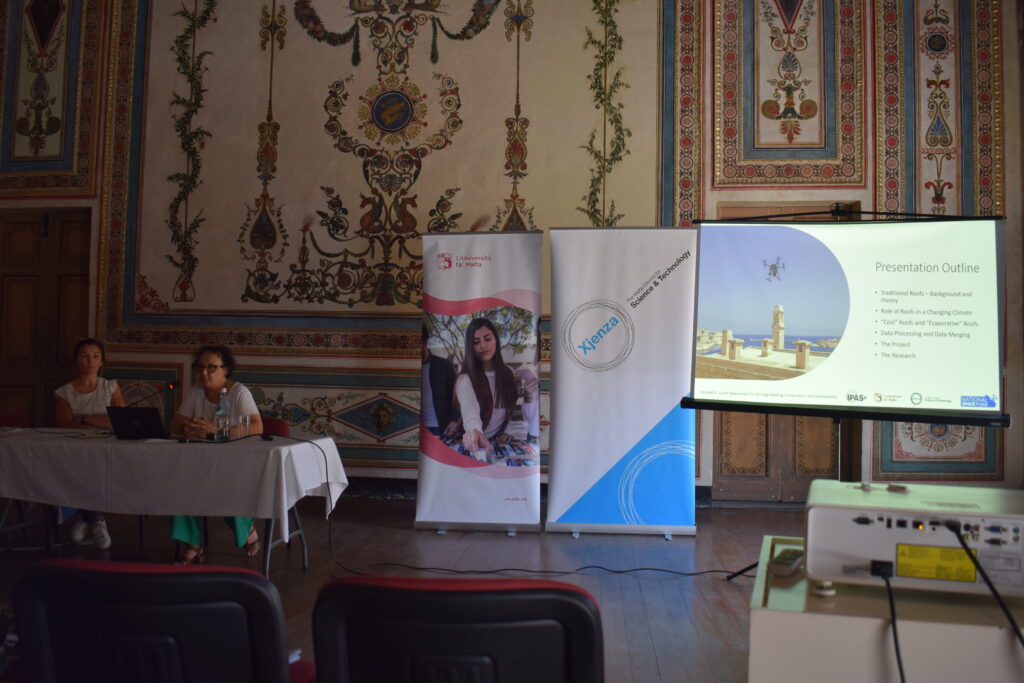
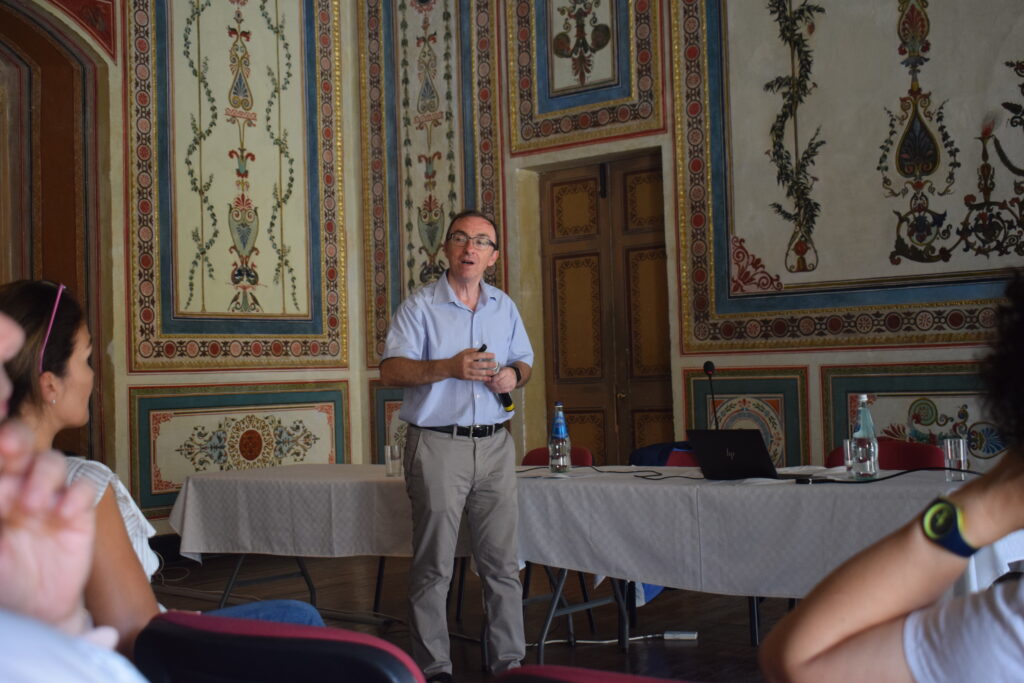
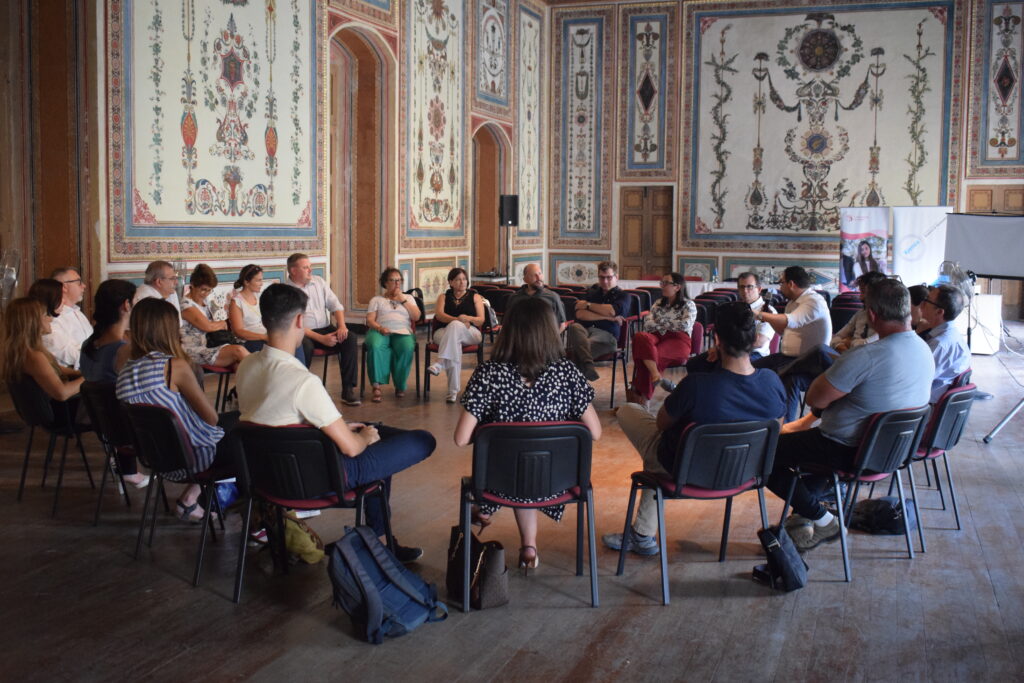
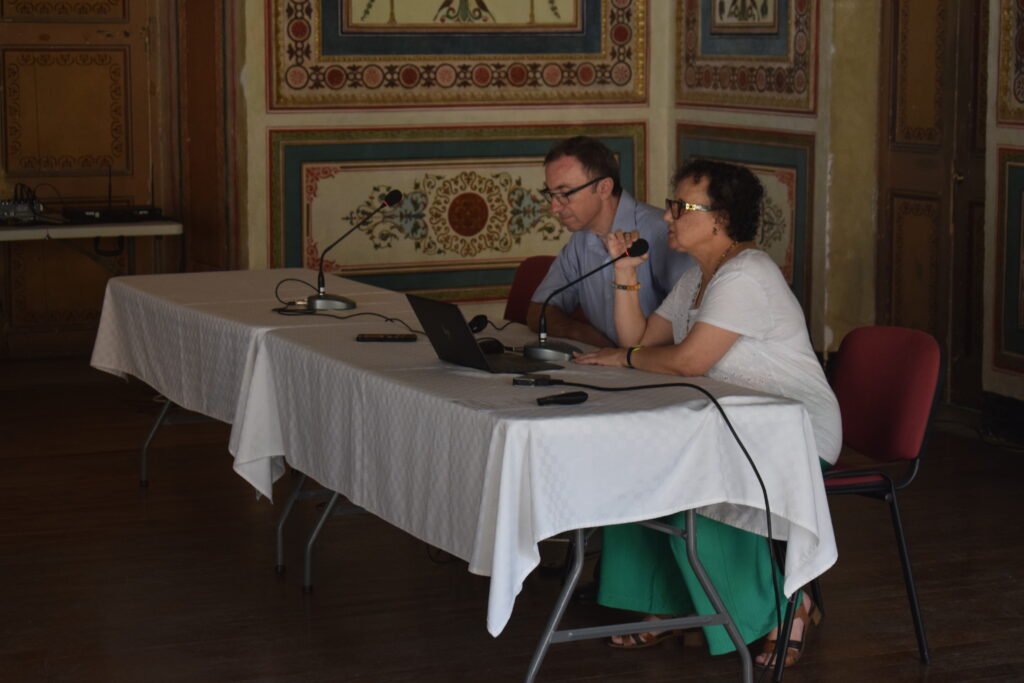
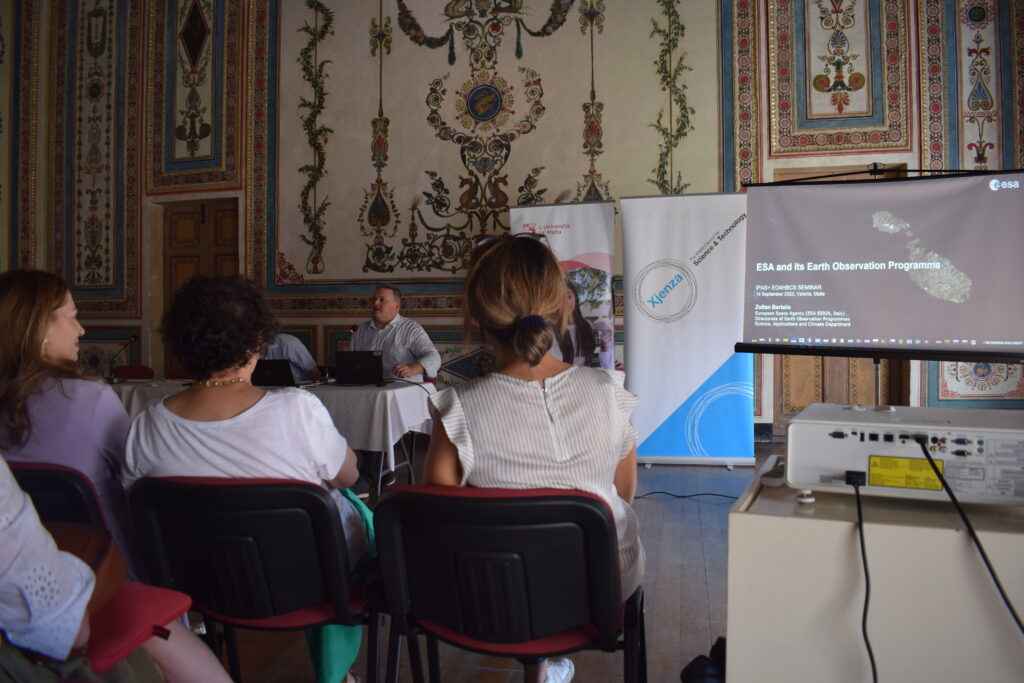
An IPAS+ 2022 MCST-supported Seminar and Dissemination Workshop was held in Valletta at the Gran Salon of the National Museum of Archaeology in Sptember 2023. The purpose of the seminar was to present the research and results of EO4HBCS, a three year long research by Prof. Joann Cassar from the Department of Conservation and Built Heritage of the Faculty of the Built Environment, Prof. Charles Galdies from the Institute of Earth Systems, and Ing. Elizabeth Muscat Azzopardi from the above Department. Data merging and analysis was done by Dr. Stefano Natali and Ms Alexandra Bojor from SISTEMA who were also present at the seminar. Addressing the audience were the Permanent Secretary from the Ministry for the National Heritage, the Arts and Local Government, a representative from the Superintendence of Cultural Heritage, the Dean of the Faculty for the Built Environment and the Pro-Rector for Research from the University of Malta. Keynote presentations were given by Dr. Zoltan Bartalis from the European Space Agency and Dr. Skevi Perdikou from GEOFEM (Cyprus).
The research presented examines the nexus between roof thermal properties and energy efficiency, with a particular focus on the traditional “deffun mortar” roofs found in Malta. This study underscores the remarkable attributes of these traditional roofs, affirming their capacity to provide insulation against external environmental factors. Notably, preliminary results indicate that these roofs outperform their modified versions or hybrid counterparts in terms of thermal properties.
The significance of this lies in its potential to sustain a more comfortable internal environment. By reducing the reliance on active cooling mechanisms such as air conditioning, which can exacerbate the Urban Heat Island (UHI) phenomenon, these roofs emerge as sustainable climate regulators.
An intriguing revelation of this research lies in the synergy between these traditional roofs and historical architectural elements, particularly within Mediterranean’s changing climate. The study advocates for an expansion of its scope, advocating for a more comprehensive exploration of similar roof types over extended periods within the Mediterranean. In fact, the authors are committed to continue collecting richer datasets, lending depth to the further understanding of these architectural gems as well as to contribute significantly towards the mitigation of the UHI effect in historic urban enclaves.
This research introduces another exciting prospect—the utilization of remote technologies, specifically multispectral aerial drones and very high-resolution satellite data, to discern diverse roof types. This is very useful for the identification and mapping of this historical gem.
The authors underscore the importance of collaboration among a diverse spectrum of stakeholders: scientists, engineers, architects, building and heritage custodians. Proposed strategies, ranging from policy incentives to regulations, case studies, and public awareness campaigns, are set forth to invigorate the sustainable stewardship of historical structures and their roofing materials. The research also charts an exciting course into the future, envisaging the integration of cutting-edge technologies such as AI, machine learning, and advanced satellite systems, all poised to propel our understanding of traditional roofs and their transformative potential in the face of climate change.
The reserach has also been published and is available online. Reference for this new study is as follows: Cassar, J.; Galdies, C.; Muscat Azzopardi, E. Sustainability of Traditional, Historical Roofs in the Mediterranean: A Rediscovered Opportunity for a Carbon Neutral Future. Sustainability 2023, 15, 12723. https://www.mdpi.com/2071-1050/15/17/12723

